Therapies Used at Sai Physiotherapy & Pain Management Clinic
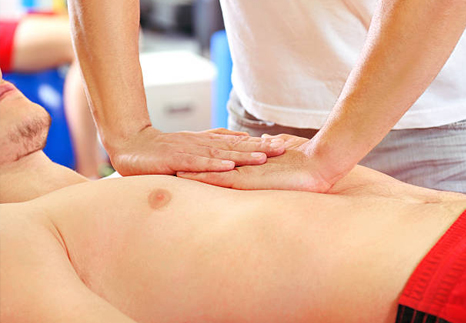
Chest Physiotherapy
Chest physiotherapy is a process that includes clearance of secretions from large and small airways and re-expansion of the non-ventilated lung.
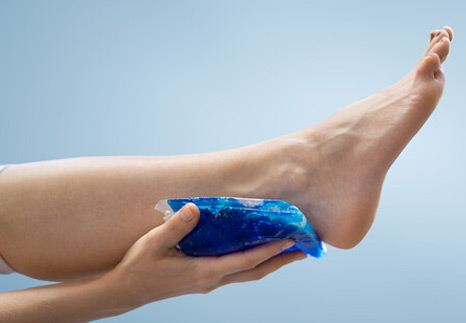
Cryotherapy Cold Therapy
Cryotherapy is used just as heat is, in the rehabilitation of injuries. Cryotherapy is often used for pain relief, fever reduction, control bleeding, prevention or reduction of edema from trauma and inflammation, decrease in muscle spasm, and reduction of spasticity. Cold is usually applied during the first 24 to 48 hours following an injury. Applying cold first usually results in decreased fluid filtration into the tissue interstitium, decreased inflammation and pain, and a decrease in metabolic rate. Effects of Cold Therapy
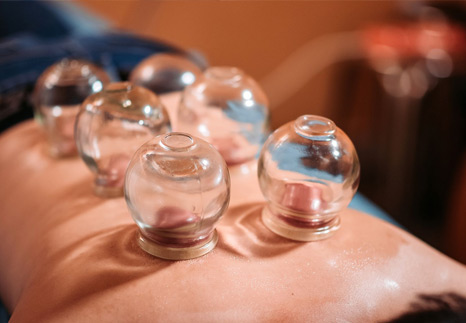
Cupping Therapy
Cupping Therapy is a practice that involves application of rounded inverted cups to certain parts of the body using vacuum effect. This cups basically upon placing over the skin creates suction and this suction facilitates healing with blood flow
Cupping increases blood circulation to the area where the cups are placed. This may relieve muscle tension, which can improve overall blood flow and promote cell repair. It may also help form new connective tissues and create new blood vessels in the tissue.
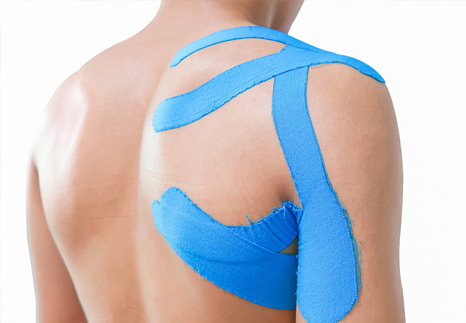
Kinesio Taping Therapy
Elastic Therapeutic Tape, also called Kinesiology Tape, Kinesio Tape, K-Tape is a rehabilitative method used to facilitate the body's natural healing process, while providing support and stability to muscles and joints without restricting the body's range of motion. Tapping is usually used by physiotherapists to change Muscle Tone, Move Lymphatic Fluids, Correct Movement Patterns, and Improve Posture.
Kinesiology tape is a therapeutic tape that is applied to the body to decrease pain, reduce swelling, and improve functionality. The process involves placing Strips of Kinesiology tape on the body in Specific directions for therapeutic purposes.
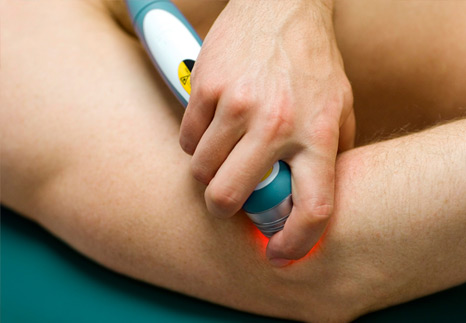
Laser Therapy
L.A.S.E.R. stands for Light Amplification by Stimulated Emission of Radiation. Laser Therapy involves the application of low-intensity laser light to relieve pain caused due to the damage of soft tissue. It facilitates tissue repair and restores normal cell function. It is used by experts to heal wounds and pain. The level of light is quite low as compared to other forms of Laser Therapy, such as those used to destroy tumors and coagulate tissues.
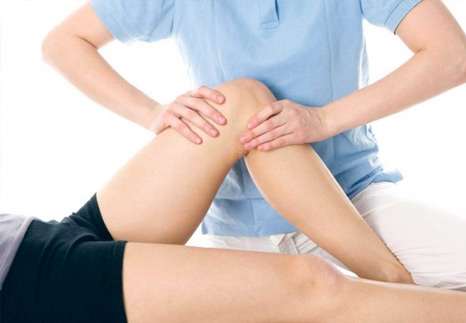
Manual Therapy
Manual Therapy is a special form of physical therapy delivered with hands. It is a method by which physiotherapists can assess and treat their patients with skilled hand movements.
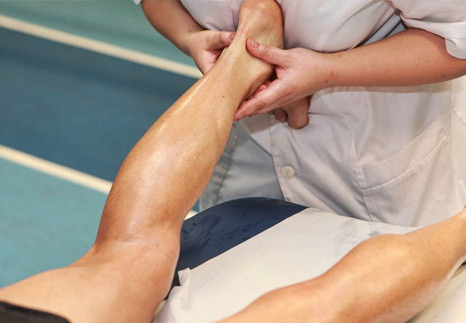
Myofascial Release MFR
Myofascial release massage is a soft tissue treatment of skeletal muscle pain and immobility. Myofascial release involves applying gentle pressure into connective tissue and fascia. Fascia is a structure of connective tissues that surround muscles, blood vessels, and nerves. In healthy conditions, fascia tissue is relaxed and wavy in configuration. The fascial system can provide cushioning support so that movement is increased and without pain. A myofascial release technique helps to detect restrictions and can facilitate the release of the fascia. Injury, surgery, poor posture, or inflammation of tissues can create myofascial restrictions that produce pressure and pain upon sensitive structures

Post-Covid Physiotherapy
Post-COVID physiotherapy is therapy given to patients who have recovered from COVID -19 but are suffering from the long-term side- effects of COVID-19. Post-COVID physiotherapy helps to improve the functionality of the musculoskeletal, cardiovascular, and respiratory systems. It also improves cognition, decreases depression and anxiety.
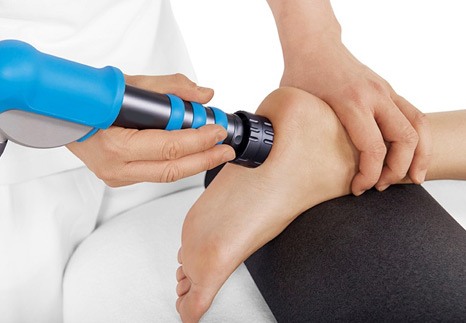
Shockwave Therapy
Shockwave therapy is a non-invasive treatment which uses low energy acoustic wave and a coupling medium to transmit sound waves to the tissues for the treatment. These sound waves produce a therapeutic effect causing a decrease in pain thus increasing mobility and functionality by triggering the body's healing process. This modality is more commonly used while treating many musculoskeletal conditions, involving connective tissues such as ligaments and tendons.

Spinal Decompression | Traction Therapy
A traction is a treatment option that is based on the application of a longitudinal force to the axis of the spinal column. In other words, parts of the spinal column are pulled in opposite directions to stabilize or change the position of damaged aspects of the spine. The force is usually applied to the skull through a series of weights or a fixation device and requires that the patient is either kept in bed or placed in a halo vest. Traction is a manual technique designed to reduce pressure on affected vertebral discs that are causing pain. Traction is a manual ‘stretching’ of the spine which reduces pressure on the discs and therefore reduces the individual’s pain.
Cervical traction is commonly performed using manual, mechanical, or motorized methods (with a head or chin sling) or with the use of a supine posterior distraction unit. Mechanical cervical traction can be applied in the supine position, which reduces the weight of the head but increases frictional resistance. This position also allows for better control of the head by the patient and is typically more comfortable.
Lumbar traction requires a significantly greater force to create a distraction of the vertebral segments than cervical traction. Common traction systems include a thoracic or chest belt with a pelvic belt, inversion, a split traction table, or an auto traction table. Split traction tables have a mobile half and a stationary half. Auto traction tables allow both segments of the table to move and are controlled by the patient. The patient assumes the most pain-free position and performs active traction by pulling on an overhead bar. The patient then uses his or her feet to activate a bar, which alternates compressive and distracting forces.
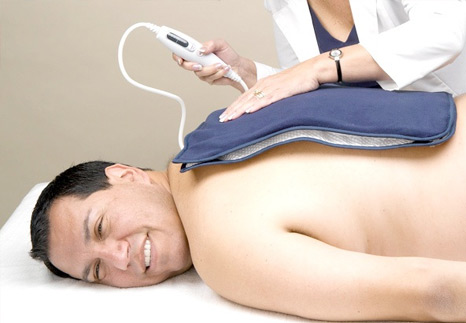
SWD | Heat Therapy
Thermotherapy involves the application of Heat. The most common heating agent used in rehabilitation is a hot pack. Hot packs transfer their heat energy to the body by conduction. Superficial heat usually produces temperature elevation in the underlying tissues to a depth of up to 1cm. Adipose tissue acts as an insulating layer, which decreases the depth of heat. Commercial hot packs are canvas, usually filled with a hydrophilic substance, that is immersed in 1700F (770C), water in a thermostatically controlled heater. The packs can retain heat up to 30 minutes. With superficial heat, local metabolism is increased and local vasodilatation with hyperemia occurs. Initial vasoconstriction is produced in deep tissue layers, followed by vasodilatation. Hot packs also promote muscle relaxation as well as sedation of sensory nerve endings.
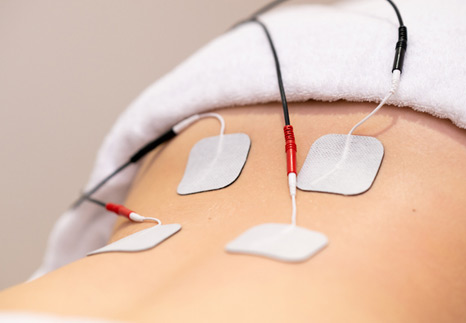
Transcutaneous Electrical Nerve Stimulation (TENS) Therapy
It is one of the methods of electrical stimulation whose primary aim is to provide a degree of symptomatic pain relief by exciting sensory nerves. TENS units work by delivering small electrical impulses through electrodes that have adhesive pads to attach them to a person's skin. These electrical impulses flood the nervous system, reducing its ability to transmit pain signals to the spinal cord and brain.
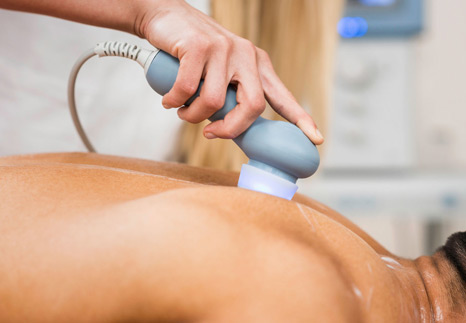
Ultrasound Therapy
This therapy involves the application of Ultrasound waves above that of the range of human hearing in order to treat various types of injuries. The application of Ultrasound Therapy helps in increasing the blood flow of a localized area in order to reduce the swelling and inflammation in that area. It is also used to enhance the healing of a bone fracture.
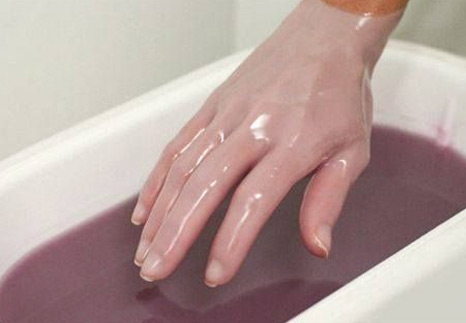
Wax Therapy
Wax therapy is a form of deep heat therapy one of the most effective ways of applying heat to improve mobility by warming the connective tissues. Wax Therapy, involves the application of molten paraffin wax, to the connecting tissues causing muscle relaxation and improves joint mobility. It is mainly used to treat Painful hands and feet. It is basically used in combination with the common mobilizing techniques and customized exercise programs to achieve better results.

